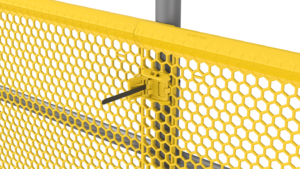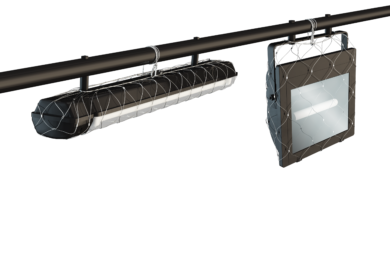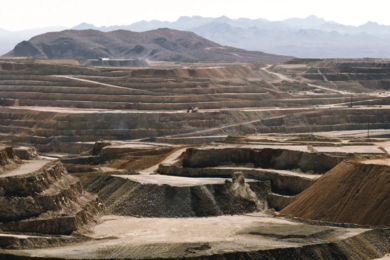The Australian mining sector has made significant strides in improving safety standards over the past decade. Safety still remains an ongoing challenge for mining operators, however, and mining had the fifth highest fatality rate of any industry in Australia last year. A significant cause of injury or death is dropped objects (drops). Across all Australian industries in 2019, 11% of fatalities were caused by drops.
A recent article by Mike Rice, Commercial Director, Dropsafe, provided an overview of the risks posed by drops in mining, and gives an insight into how Australian businesses such as Teksal Safety, Dropsafe’s Australian distribution partner, are supporting forward thinking mining operators to get to grips with the drops challenge.

“A mining site sees heavy activity, wear and tear, corrosion, and vibration. This creates an environment where drops risks are common. These risks can be categorised into ‘static’ and ‘dynamic’ drops. ‘Static’ drops, such as overhead lights, aviation beacons, and CCTV cameras, can become loose and fall when the fixture or mounting brackets deteriorate over time. In contrast, ‘dynamic’ drops consist of tools and equipment being dropped by personnel from raised platforms and down shafts. This can include loose rocks falling from conveyor belts or due to blasting, drilling, or seismic activity.”
Rice says drops pose a four-fold threat in mining, as in other industries across Australia. There is the well-recognised risk of injury or fatality to personnel, as well as the risk of equipment damage. Reputational fallout from an incident is also likely, where negative publicity can affect new business. These factors can all combine to create significant financial consequences for businesses in which drops incidents occur.

There are three key drops risk areas commonly seen on mining sites in Australia. Dropsafe and Teksal Safety have found that when operators focus the physical element of their drops programmes on these hazards, they can ensure that their expenditure on engineered drops prevention solutions is optimised.
First is fixtures and fittings. In a bid to cut expenditure, some sites have used makeshift ‘sling’ solutions to secure vulnerable fixtures such as lighting and cameras. High quality, corrosion-resistant steel mesh netting solutions that surround fixtures mitigates this risk more effectively, with less long-term expenditure due to reduced replacement costs.
On walkways and stairwells the risk can be mitigated using robust, high-grade polymer barrier products that clip on to all forms of guardrailing. When selecting a barrier range, operators should consider whether the product is designed for the environmental conditions faced on site. Underground mines will, for example, face less UV and wind exposure than open cast mines, and would benefit from a barrier engineered for moderate conditions.
In terms of handheld tools and equipment being dropped by technicians working at height, lightweight steel mesh pouches enable the tethering of tools such as radios and hammers, greatly reducing this risk. This is vital at mine sites, where personnel frequently work across multiple elevations.
“It is significantly easier and cheaper to address drops risks during the installation or maintenance phases, by adding barriers to conveyor belts and adding nets to light fittings. For example, if businesses equip workers with safety pouches for personal equipment early on, many accidents can be avoided with minimal expenditure. Engineered solutions are a vital component of an effective drops programme. Best practice in other industries that see high drops risks, such as O&G, increasingly focuses on establishing a hierarchy of controls, widely used in HSE globally. A hierarchy of controls recognises that mitigation measures such as PPE represent the last line of defence. The priority is always to eliminate the hazard. If this can’t be achieved, the hazard should be substituted, which means the object should be replaced if possible. Only then should control measures be used, which include engineered solutions such as nets and barriers, administrative controls such as procedures, and PPE.”
Rice concludes: “Across industries such as O&G, power generation and mining, there have been instances of barriers constructed from chain link fencing, orange plastic netting, and plywood. These solutions may require less initial expenditure. Over a time period of ten years, they will require replacement several times. Factoring installation costs in, it becomes clear that durable, high quality products are not only safer, but more affordable.”
The expanded Barrier range
Dropsafe recently announced that it is expanding its Barrier range to meet industry demand for robust drops prevention solutions across all environments, with the ME for moderate environments and XE for extreme environments.The Dropsafe Barrier XE (Extreme Environment) is rated for harsh offshore conditions, very high levels of UV radiation exposure and extremely cold weather. The barrier is already used extensively on North Sea oil rigs and other facilities where temperatures reach far below freezing. The Barrier XE is also ideally suited to mining and industrial sites in northern latitudes like Russia, Alaska or Canada. The Dropsafe Barrier ME (Moderate Environment) is able to withstand the same impacts and wind loading as the XE. It is tailored for temperate offshore and onshore environments where high levels of UV and temperatures below -5ºC are not a factor. This includes power stations, refineries, mines, and offshore rigs outside of extreme cold regions. “The two Barrier variants both provide superior standards of drops prevention, with extra flexibility to withstand Cat 3 or Cat 5 wind speeds depending on the option chosen during the installation process.”











